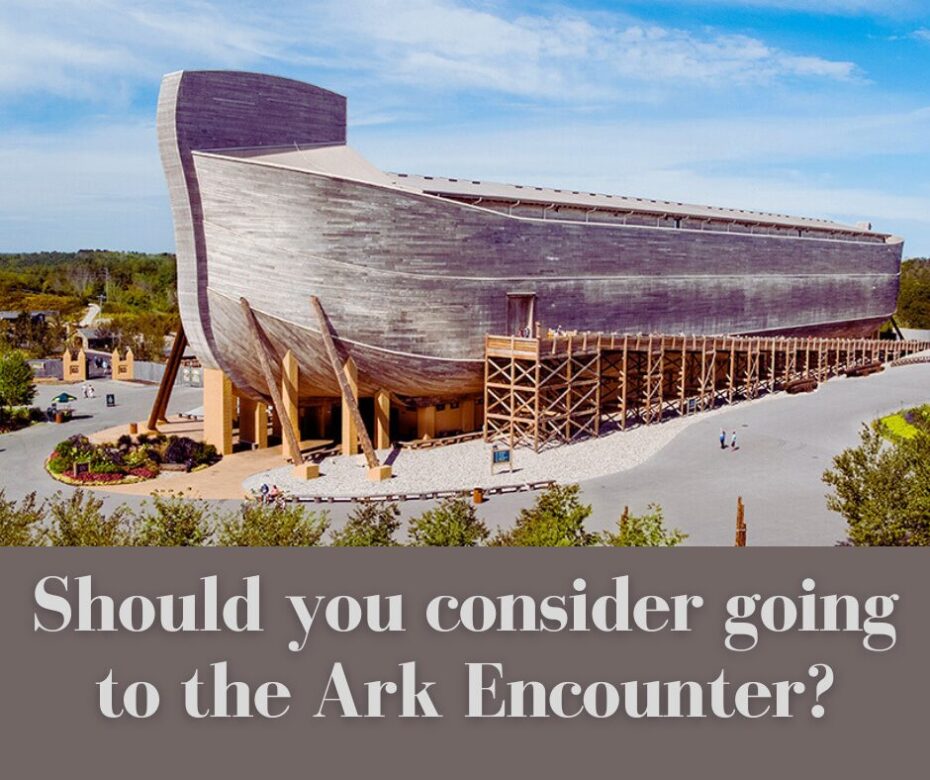A few years ago, I had the opportunity to go to the Ark Encounter and the Creation Museum in Williamstown, Kentucky. Both attractions are associated with Ken Ham’s ministry, Answers in Genesis, and have become well-known family activities for Christians around the world. The Ark Encounter is a replica of Noah’s Ark, built to reflect the exact dimensions listed in the Scriptures. The Creation Museum explores the Creation account, as well as other key events in the Book of Genesis, with exhibits, dioramas, and more.
A few friends of mine recently went to both attractions and shared their thoughts about their time there. Combining my own experience with their observations, this blog will review both from a Free Grace perspective.
First, let’s look at the positive things. The overall message of both attractions is that the Bible should be understood literally and that the Word of God is inerrant. This is the most commendable aspect of both attractions as well as the Answers in Genesis ministry. The creation of the world, Adam and Eve, the Fall, etc., are all presented as literal accounts of real people and places. Unlike popular trends in the church today, which strive to depict Genesis as a mere poem, or philosophical exercise, Answers in Genesis does an excellent job of handling the Scriptures at face value and with reverence. Rather than trying to find ways to refute the Scriptures, the ministry seeks to find answers within the Biblical text and to support them with science. One friend commented:
“They give excellent answers to all the typical objections.”
If you have a question about the Creation account and are dealing with common attacks from the unbelieving world, Answers in Genesis will likely have a clear response to those objections. For young people and children, this can be especially helpful when dealing with basic apologetics. One friend remarked:
“I love that they take the Bible literally and that they elevate the name of God. All the nerdy science stuff is great, but this was my favorite part. ‘God is above all and is mighty’ was the recurring message.”
There are, however, some areas of concern. Some are minor, but one is major. The first minor issue is one of convenience. The two attractions are a 45-minute drive from one another. If you plan to go with small children, or somebody who is wheelchair-bound or handicapped, it’s likely going to require more than one day to visit both sites. If you have time for only one attraction, I would recommend the Ark Encounter over the museum.
Another issue for some is that while both attractions are marketed for families, the content in some areas seems too graphic for younger children. One mom commented:
“As a parent, I had an issue with some of the content displayed. There were very realistic pictures of things like David holding the bloody severed head of Goliath. There was an exhibit about the miracle of birth, and it got pretty graphic about abortion. We had to quickly walk through so the kids didn’t catch on to what was going on.”
I also remember there being exhibits depicting child sacrifices. While, overall, both exhibits are family-friendly, parents of younger children–or parents who simply want to bypass those areas–may want to plan ahead and ask employees which exhibits they should skip.
A major problem with both attractions is also the most important. Their gospel presentations are muddy at best and reflect a Lordship Salvation perspective.
On one display titled, “Where will you spend eternity?” the concluding paragraph read:
“All who repent of their sins and believe in the Lord Jesus Christ, trusting in His sacrifice death and resurrection, will enjoy everlasting life with their Creator and Savior.”
It is also implied throughout the attractions that while Noah represents a believer who was “saved,” the rest of his unrepentant generation were all unbelievers, and thus will all be in the lake of fire. This reflects what Lordship proponents teach: One must turn to the Lord and live righteously in order to be saved from the lake of fire. The distinction that Noah was saved physically, but not spiritually, because of his faithfulness was not clearly stated.
Overall, I would recommend checking out both attractions, with the mindset that they are helpful tools in refuting common objections to the Creation account and the inerrancy of Scripture. However, caution should be exercised regarding their salvation presentations.

